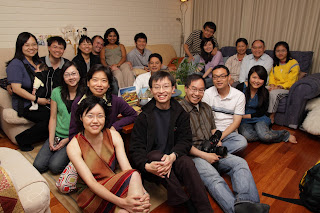The picture speaks for itself....

Moments worth capturing


 This graph shows Nikon's 14-24 f2.8 G. The results are even better here. And these are zoom lenses!!!!
This graph shows Nikon's 14-24 f2.8 G. The results are even better here. And these are zoom lenses!!!! Whats worse, we are comparing a prime lens against two zooms. This prime is Canon's newest wide angle lens with SWC (Sub Wavelength Coating), Canon's own technology to give performance similar to Nikon's Nano Coat technology. And guess what, this Canon prime performs less well. Quite disappointing really.
Whats worse, we are comparing a prime lens against two zooms. This prime is Canon's newest wide angle lens with SWC (Sub Wavelength Coating), Canon's own technology to give performance similar to Nikon's Nano Coat technology. And guess what, this Canon prime performs less well. Quite disappointing really.



 I like this image as it shows off the rugged terrain I had to clamber over to get to the spot where I was to take those photos. Taken with my G10 you can see I'm clearly making full use of the deeper DOF of a small sensor camera. On the ground you can see the Lowepro Flipside 400AW camera backpack that I use. Its much better the the Israeli designed Kata 3n1 30 that I have used before. The Flipside 400AW feels like a real backpack when your carrying it. Meaning its comfortable and functional. If you look carefully, you'll also see a sliplock pouch I've added to the side. I have two, one on each side to be exact.
I like this image as it shows off the rugged terrain I had to clamber over to get to the spot where I was to take those photos. Taken with my G10 you can see I'm clearly making full use of the deeper DOF of a small sensor camera. On the ground you can see the Lowepro Flipside 400AW camera backpack that I use. Its much better the the Israeli designed Kata 3n1 30 that I have used before. The Flipside 400AW feels like a real backpack when your carrying it. Meaning its comfortable and functional. If you look carefully, you'll also see a sliplock pouch I've added to the side. I have two, one on each side to be exact. This shot shows the EOS 50D in "settings display" mode. Looks much like a Sony Alpha doesn't it? I find this feature very useful especially when taking shots in awkward positions. I swith between this screen and LiveView to adjust settings, compose, focus, and take the shot.
This shot shows the EOS 50D in "settings display" mode. Looks much like a Sony Alpha doesn't it? I find this feature very useful especially when taking shots in awkward positions. I swith between this screen and LiveView to adjust settings, compose, focus, and take the shot.

 Combining ones' hiking & backpacking skills, love for nature, love for technology and skill in photography and creative use of your creativity and taking time out to enjoy is what makes a holiday worthwhile. YEA!
Combining ones' hiking & backpacking skills, love for nature, love for technology and skill in photography and creative use of your creativity and taking time out to enjoy is what makes a holiday worthwhile. YEA!

